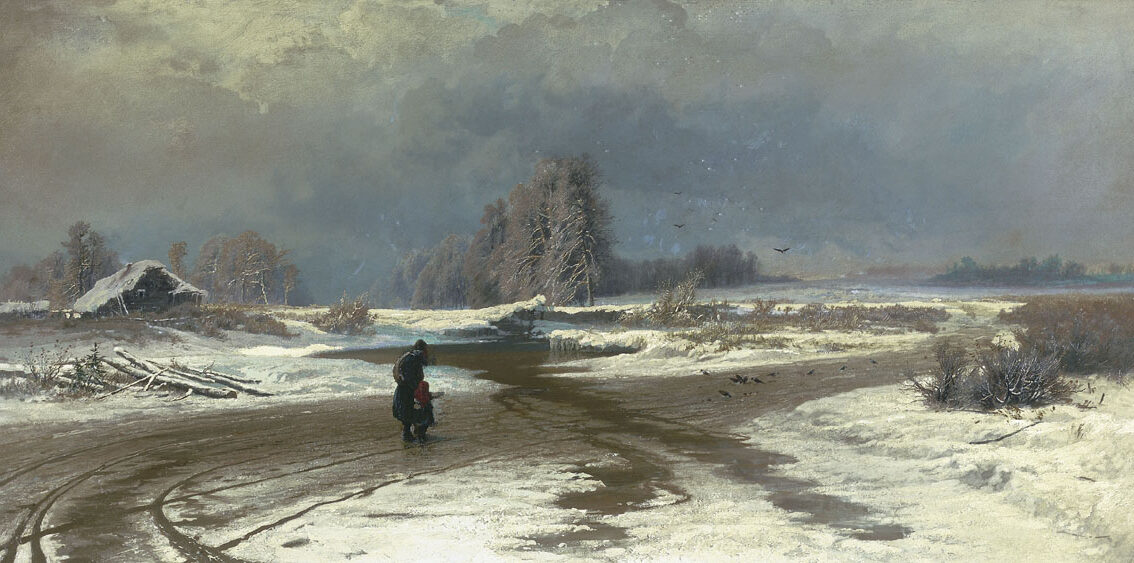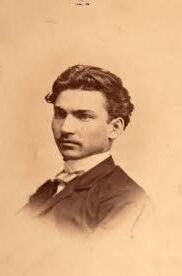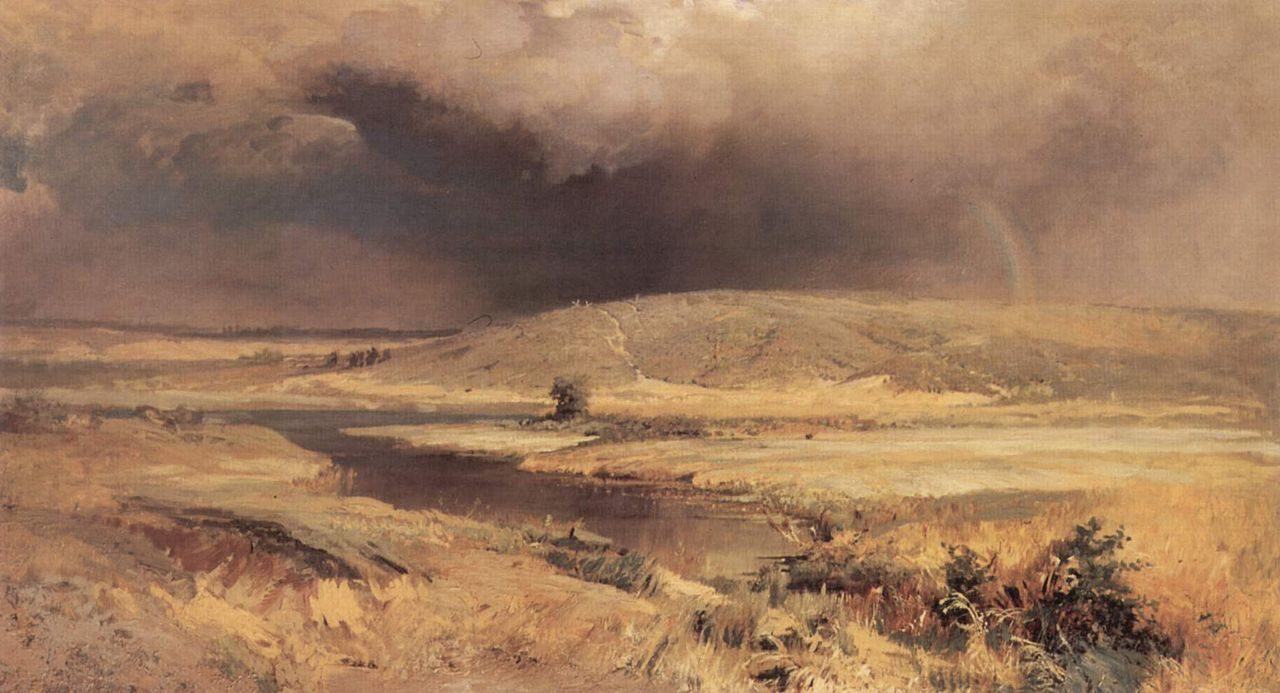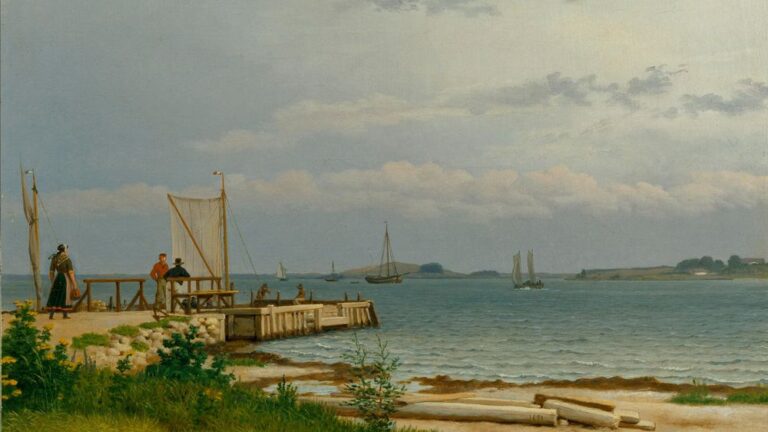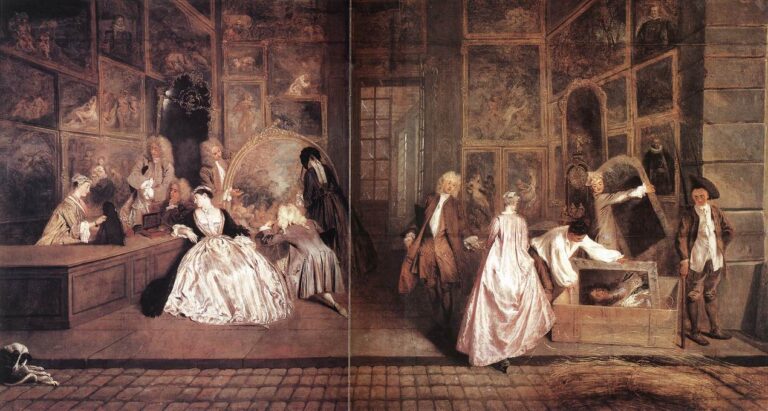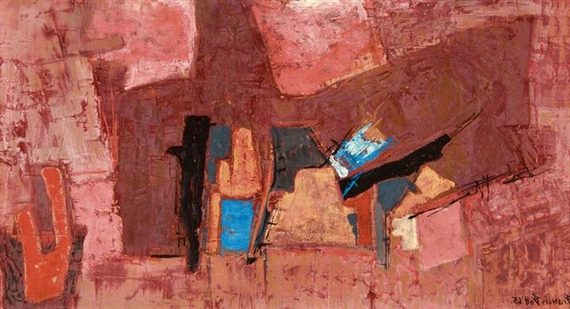Fyodor Vasilyev, Painter: The Russian Landscape Master of the 19th Century
Born: February 10, 1850, Gatchina, Russian Federation
Death: September 24, 1873, Yalta, Ukraine
Mouvement artistique : Réalisme
Nationalité : Russe
Teacher: Ivan Shishkin
Institution: School of Painting at the Society for Promotion of Artists
Fyodor Vasilyev, Painter: The Russian Landscape Master of the 19th Century
Biography of Fyodor Vasilyev
Fyodor Alexandrovich Vasilyev (1850-1873) was a remarkable Russian landscape painter whose brief life produced significant artistic contributions.
Despite living only 23 years, he created works that transformed Russian landscape painting through his lyrical style.
Vie et éducation précoces
Born on February 10, 1850, in Gatchina, Russia, Fyodor Vasilyev came from modest beginnings.
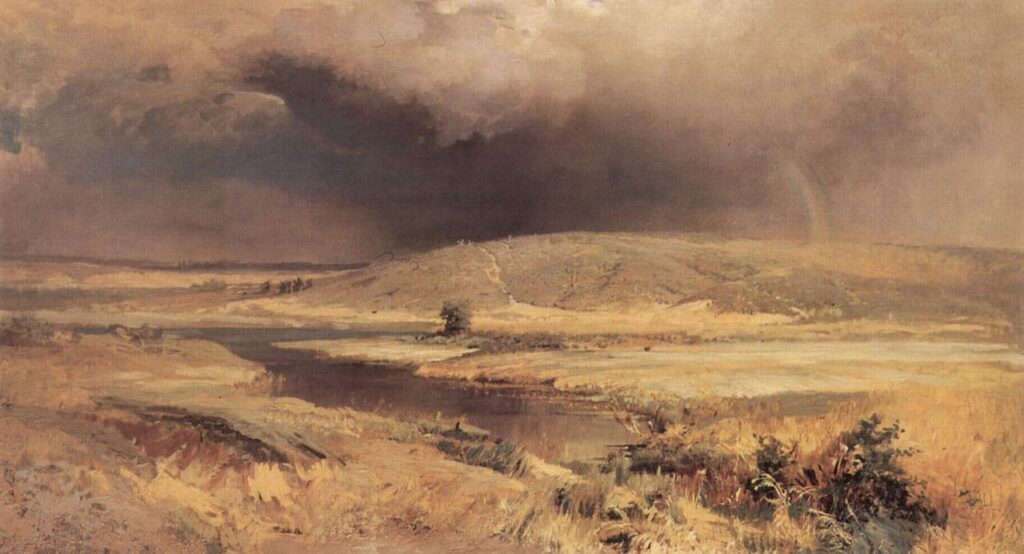
Lakuna on Volga, 1870–1871 by Fyodor Vasilyev
His early years were marked by financial hardship, which did not deter his artistic pursuits.
Vasilyev’s formal artistic education was limited, but he developed his skills through practical experience.
In his teens, he began working at the Post Office while simultaneously studying at the Drawing School of the Society for the Encouragement of Artists in St. Petersburg.
His natural talent quickly caught the attention of established artists, including Ivan Shishkin, who became his mentor. This relationship proved instrumental in Vasilyev’s development as a painter.
During this formative period, Vasilyev absorbed influences from the Russian art world while developing his distinctive approach to landscape painting.
Carrière artistique
Vasilyev’s professional career was remarkably productive despite its brevity.
By age 17, he was already creating notable works that garnered attention from the Imperial Academy of Arts.
His 1867 participation in a painting expedition along the Volga River with Ilya Repin and other prominent artists proved pivotal. This journey inspired some of his most celebrated works, including “After the Rain” (1869) and “The Thaw” (1871).
Vasilyev’s style incorporated emotional depth into landscapes, capturing the moods of Russian nature with extraordinary sensitivity.
Critics praised his ability to depict atmospheric conditions and light with remarkable accuracy.
His paintings often featured vast skies, expansive fields, and detailed natural elements. This approach revolutionized Russian landscape painting by introducing a deeply lyrical quality to the genre.
Health Challenges and Demise
In 1871, Vasilyev’s health deteriorated significantly when he contracted tuberculosis, a disease that would ultimately claim his life.
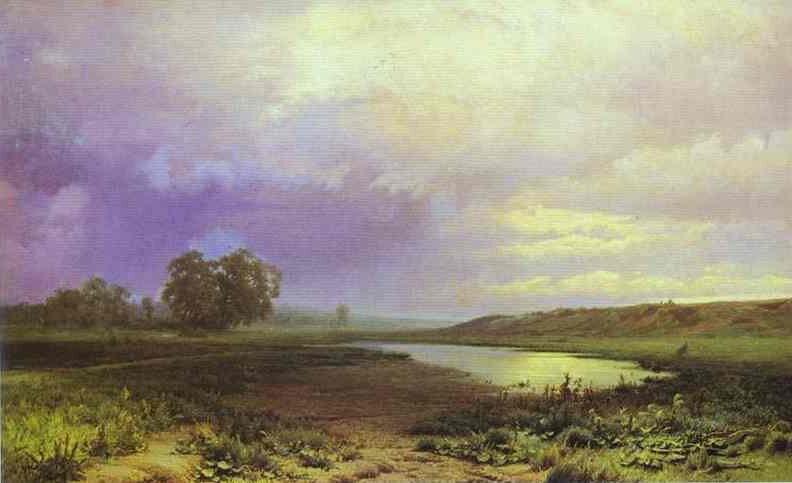
Wet Meadow, 1872 by Fyodor Vasilyev
Seeking treatment, he relocated to Yalta in Crimea’s milder climate.
Despite his illness, Vasilyev continued painting with remarkable dedication. He created numerous Crimean landscapes from memory and sketches, unable to work outdoors due to his weakening condition.
The Imperial Academy provided financial support during his illness, recognizing his exceptional talent. Few photographs of Vasilyev exist, adding to his somewhat mysterious legacy.
On September 24, 1873, Fyodor Vasilyev died in Yalta at just 23 years old. His premature death cut short a brilliant career, leaving art historians to speculate about what might have been.
Despite his short life, Vasilyev’s approximately 200 surviving works secured his place as one of Russia’s most influential landscape painters.
Style artistique et techniques
Fyodor Vasilyev developed a distinctive approach to landscape painting that revolutionized Russian art in the 19th century. His techniques focused on capturing emotional atmospheres through color and light, setting him apart from his contemporaries.
Influence and Innovations
Vasilyev introduced the lyrical landscape style to Russian art, creating works that evoked emotional responses through atmospheric effects.
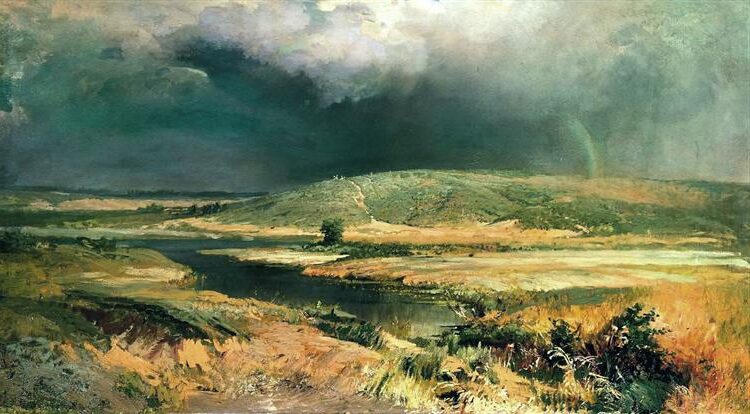
Volga Lagoon, 1870 by Fyodor Vasilyev
His paintings featured innovative uses of light and shadow, with delicate brushwork that captured the subtle moods of nature.
In his short career, he developed techniques for layering colors to create depth and dimension in his scenes.
These methods became particularly evident in his Crimean landscapes, where he used varied brushstrokes to establish perspective and atmosphere.
His innovations influenced many Russian painters who followed. Vasilyev’s reproduction techniques allowed him to capture fleeting moments of natural beauty with remarkable accuracy.
Thèmes et sujets
Vasilyev’s paintings primarily featured Russian rural landscapes, with special attention to weather conditions and seasonal changes.
He was particularly skilled at depicting skies, clouds, and atmospheric conditions that conveyed specific moods.
Le sien most celebrated works include:
- Scenes of the Russian countryside
- Dramatic weather moments
- Coastal views from the Crimea
- Rural villages and their surroundings
Vasilyev often incorporated human elements into his landscapes, but kept them subordinate to the natural setting. His 360° panoramic approach to composition allowed viewers to feel immersed in his scenes.
Fine art images of his works reveal his preference for subdued color palettes that occasionally burst with dramatic lighting effects. This contrast became one of his signature techniques in portraying the Russian landscape.
Héritage et réception
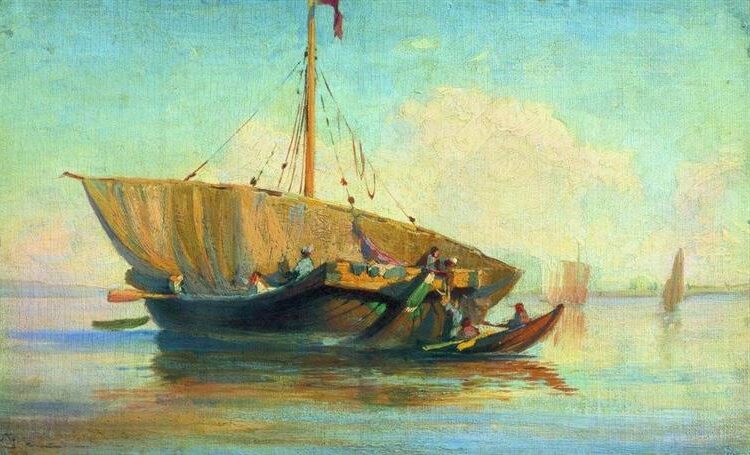
Boat, 1870 by Fyodor Vasilyev
Fyodor Vasilyev’s impact on Russian art remains significant despite his tragically short life. His innovative approach to landscape painting influenced generations of artists who followed him.
Critical Assessment
Vasilyev is widely recognized as the pioneer of the lyrical landscape style in Russian art. His work transformed how Russian painters approached nature scenes, bringing emotional depth and personal expression to the genre.
Art historians praise his ability to capture mood through atmospheric effects, particularly his masterful depiction of cloudy skies and stormy weather. This sensitivity earned him comparisons to the great European landscape painters of his time.
Despite producing relatively few works during his brief career, critics consider his contributions pivotal to the development of Russian landscape painting. His techniques influenced the Moscow School of painting and several prominent artists who followed him.
Preservation of Works
Vasilyev’s paintings are now considered national treasures in Russia. The most comprehensive collection of his works is housed in the Tretyakov Gallery in Moscow, where art enthusiasts can view his most significant landscapes.
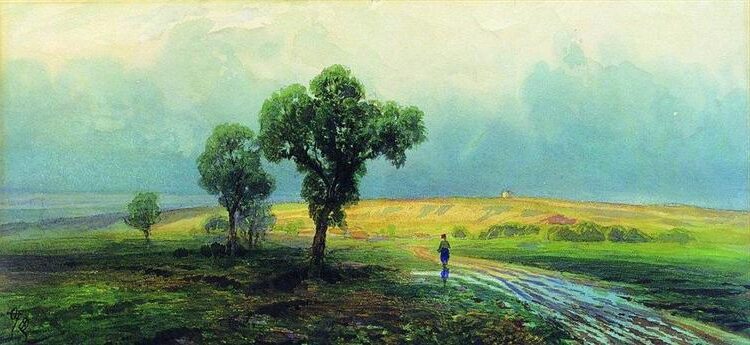
After a Heavy Rain, 1870 by Fyodor Vasilyev
Fine art images and stock photos of Vasilyev’s paintings are available through various sources, including Getty Images. These digital reproductions help preserve his artistic legacy and make his work accessible to wider audiences.
Several art conservation projects have focused on restoring and maintaining Vasilyev’s fragile works. Due to their age and the materials used, many require careful preservation efforts to maintain their original condition.
The rarity of his paintings makes them highly valuable in the art market. When his works occasionally appear at auction, they command significant attention from collectors of Russian art.
Questions fréquemment posées
Fyodor Vasilyev’s brief but influential artistic career left many curious about his techniques, influence, and legacy. His lyrical landscape style represented a significant shift in Russian painting despite his tragically short life.
What period did Fyodor Vasilyev contribute to in the history of art?
Fyodor Vasilyev contributed to Russian art during the second half of the 19th century. Born in 1850 and dying in 1873, his active painting career took place primarily in the 1860s and early 1870s.
His work emerged during a crucial transitional period in Paysage russe painting. This was when Russian art was developing its own national identity separate from Western European influences.
Which artworks is Fyodor Vasilyev most recognized for?
Vasilyev created numerous memorable landscapes during his short life. His paintings often featured rural Russian scenery with emotional and atmospheric qualities.
His works captured the Russian countryside with poetic sensibility. Many of his most admired pieces showcase weather conditions and seasonal changes in nature.
How did Fyodor Vasilyev influence the Russian landscape painting genre?
Vasilyev introduced the lyrical landscape style to Russian art. This approach emphasized emotional and atmospheric qualities rather than just realistic depiction.
He moved Russian landscape painting toward greater expression of mood and feeling. His work helped establish a distinctly Russian approach to landscape that influenced later artists.
His innovative perspective on nature scenes changed how Russian artists portrayed their homeland’s countryside. Despite his young age, he helped push Russian landscape painting in a new direction.
What schools or movements is Fyodor Vasilyev associated with?
Vasilyev is associated with the development of Russian national landscape painting. While not formally part of a specific movement, his work helped define a new approach to Russian landscape art.
His style combined elements of realism with emotional expressiveness. This positioned him at the intersection of traditional academic painting and more modern interpretive approaches.
Are there any notable exhibitions or collections featuring Fyodor Vasilyev’s work?
Many of Vasilyev’s paintings are housed in major Russian museums. The Tretyakov Gallery in Moscow holds a significant collection of his works.
His paintings also appear in the Russian Museum in St. Petersburg. Despite his short career, his work has been included in numerous exhibitions of 19th-century Russian art.
What techniques and mediums did Fyodor Vasilyev employ in his paintings?
Vasilyev worked primarily in oils on canvas. He also created numerous studies and sketches. His technique emphasized atmospheric effects and mood through careful attention to light and weather conditions.
He developed skills in portraying clouds, fog, and rain with remarkable accuracy. His color palette often reflected the subtle hues of the Russian countryside.
Vasilyev paid special attention to the emotional quality of landscapes. He achieved this through thoughtful composition and the subtle interplay of light and shadow.

